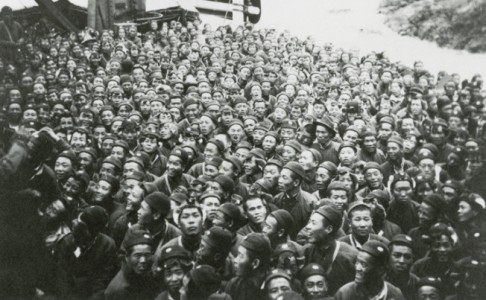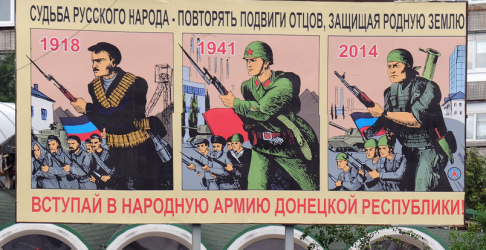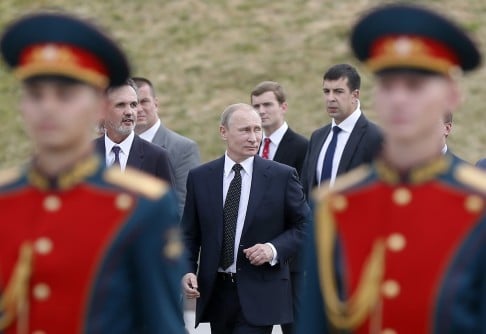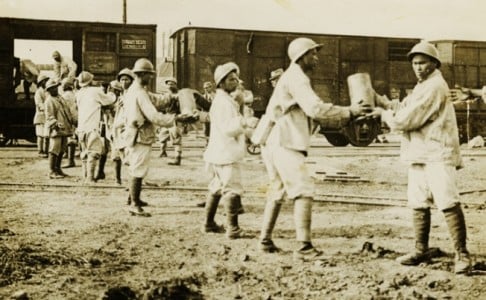
New | Q&A: The fates of 200,000 Chinese workers in Russia during the first world war
Labourers met tragic ends, some built an Arctic railway or joined the Soviet Red Army - which preceded China's own Communist movement, says author Mark O’Neill
The centenary of the first world war has recast the spotlight on the hundreds of thousands of Chinese who worked for Britain, France, Russia and the United States during the war, supporting their troops after fighting had depleted their own manpower.
Mark O’Neill, a Hong Kong-based journalist and writer, sheds light on their history in his upcoming book, From the Tsar's Railway to the Bolshevik Revolution, set to be published by Penguin Books later this month.
In an interview, O’Neill discussed how these Chinese labourers lived and how many of them fought for the world’s first communist army, the Red Army, years before China’s Communist Party was established.

How many Chinese worked in a Russia and what kind of work did they do there?
The consensus estimate of Chinese scholars is that about 200,000 Chinese worked in Russia during the first world war. They worked all over the country, from Murmansk in the north to the coal mines and factories of the Donetsk basin in Ukraine, in factories in Moscow and St Petersburg, in farms and forests in the Urals and Siberia. They built roads and railways. And some worked near the front, digging trenches and carrying ammunition for the Russian troops.

Where did these Chinese workers come from? How were they hired?
Recruiting began in earnest in 1916, after the serious losses of manpower incurred by Russia since the start of the war. Most recruiting was done in the three provinces of northeast China.
The main recruiter was Yicheng Company, ostensibly a civilian firm like the Huimin Company that hired people for France. In fact, it was owned by Chinese and Russian officials and businesspeople. It had the widest reach of any recruiter.
With headquarters in Changchun, capital of Jilin province, it had offices all over the northeast and in cities in Shandong, including Yantai and Qingdao – the main recruiting centre of Britain’s Chinese Labour Corps.
Yicheng was one of many players in the market. Demand from Russia was so strong and profits so good from the business that it attracted others – local governments and warlords as well as private companies. In theory, they had to wait for Beijing to approve the contracts before they could send workers; in reality, the authorisation process was too long and too complex, so they started anyway.
These middlemen made money from the fees paid by the Russian employer, the cost of the passports, bonuses for finding workers quickly and agreements to buy clothes and food for them, from which they took their cut.
How does their treatment in Russia compare to their treatment by French and British forces at the Western front?
There was a big difference. The workers in France and Belgium had contracts that were hired and were under the management of the British and French authorities. They were housed, fed, paid, given medical care and repatriated at the end of the war, except for the 3,000 who chose to stay in France.
But there was no Russian government involvement for those who went to Russia. They were hired by private companies and individuals. As conditions deteriorated due to the war and then the civil war, many of these companies closed or ran out of money and did not honour the contracts. Many of the Chinese workers were left on their own.

What is a typical project the Chinese worked on in Russia?
Ten thousand Chinese worked on a railway [that was] 1,044km-long to link the capital, St Petersburg, with a new port being built in the Arctic port of Murmansk. Because it was close to the Gulf Stream, it was ice-free even in winter.
Since Russia’s enemies controlled its western land and sea borders, Murmansk was to become the important port to receive goods from its allies, both in the Great War and second world war.
Construction began in March 1915 and was completed in only 20 months. It opened on November 3, 1916. The government hired 30,000 peasants from Russia and used more than 50,000 German and Austrian prisoners-of-war and 10,000 Chinese.
The workers had to lay the line across marshes frozen in winter, uninhabited rocky terrain, lakes and thick taiga. The countryside was uninhabited and could supply nothing except timber.
The men worked in shifts 24 hours a day through the cold and dark of winter, when the temperatures fall to below 40 degrees Celsius. Of the line, 266 kilometres were built over marshes, with 1,100 bridges and artificial dikes.
Many died due to cold, lack of nutrition and disease due to the extreme conditions; one estimate is 25,000, or 19 for each kilometre, that was completed. Among the dead were 400 Chinese who died of cold, because they did not receive the winter clothes due under the terms of their contract.
One of the Chinese workers was Ji Shou-shan. He wrote this in his memoirs published in 1960:
“Initially we ate steamed buns and later black bread and drank marsh water that had turned black. The diet had no fresh vegetables. We lived in log huts that were open to the wind on four sides. There were no doctors or medicines at the place of work. The Tsarist government did not care for the lives of Chinese. Those who were sick were forced to move logs and stones. Many sick people were driven to death in this way.”

What happened to the Chinese workers when the Tsarist regime collapsed?
Many Chinese workers welcomed the world’s first Communist takeover. One of them, Liu Fu, who was working on the railway. “We began to understand a truth that we did not know – poor people can take power in their country, instead of having to search everywhere for a reasonable life and happiness,” he wrote.
The workers belonged to the lowest class of society – urban and rural workers with no secure job or income and no civil rights. Russians looked down on them; they were an easy target for harassment and robbery by the police and local militia. The Bolshevik ideology – rule on behalf of the proletariat and equality of workers around the world – was very appealing.
The supporters of the Tsar and armies loyal to him attacked the new government, starting a terrible civil war. Even though this conflict did not involve China, about 40,000 of the workers joined the Red Army and fought on many fronts, including Poland, Belarus, Ukraine, the Caucasus, the Volga and Siberia, with bravery and distinction.
They wore the same uniform as other soldiers in the Red Army. They fought under Russian officers, who found them determined and efficient. Most had a limited understanding of Russian, which was both good and bad.
It meant that they had no attachment to Russian personalities or places and were insulated from outside influences; their officers could use them to commit executions.
They were also useful as "shock troops" because the enemy did not expect an attack by Chinese. Some Chinese joined the Cheka, the forerunner of the KGB.
Ren Fuchen was China’s first Bolshevik and the Chinese who rose to the highest rank in the army. He was commander of the "Chinese Red Eagle" battalion when he was killed in November 1918.
In November 1989, the Soviet Union gave him a Red Flag medal of honour; a statue of him stands in his home town of Tieling, Liaoning province, erected in 1993.

